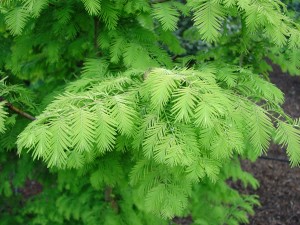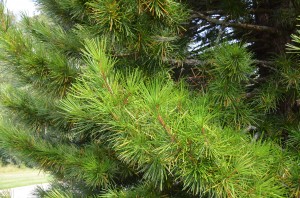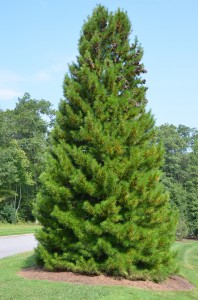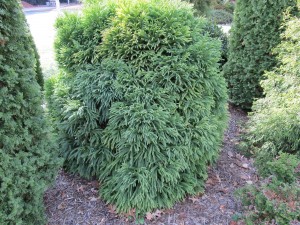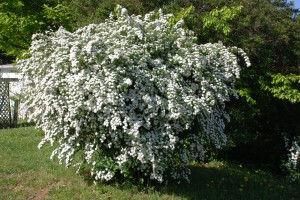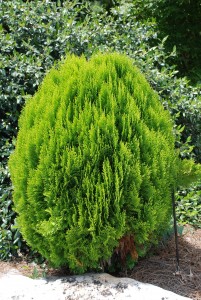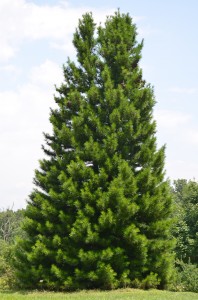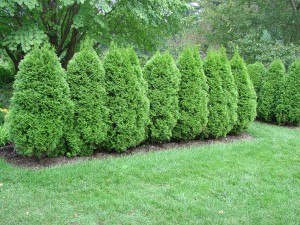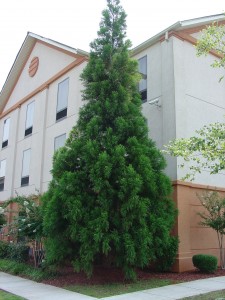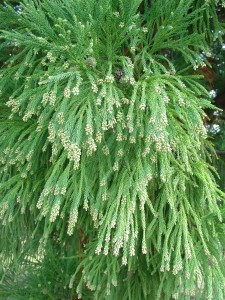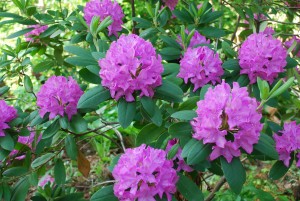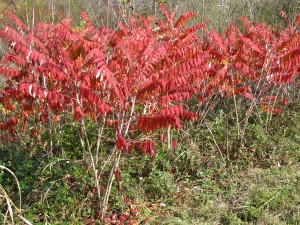Dawn redwood (Metasequoia glyptostroboides ‘Ogon’ (aka ‘Gold Rush’) is a stunning foliage color variant (USDA hardiness zones 5 to 8). Metasequoia was thought to be extinct until the mid-1940’s when rediscovered in China. Its leaves were commonly found imprinted in fossil rocks.
When developing your landscape plan, place Ogon where it will become a focal point on the property. New foliage emerges clear yellow in the spring and turns a steadfast chartreuse color through in spring and summer months. In the fall the soft feathery leaves finish burnt orange and blanket the ground surface. After several years thin peeling strips of mahogany-colored winter bark and vertical silhouette make Ogon a four-season delight.
Dawn redwood prefers a moist well-drained soil and is tolerant of wet sites for short intervals lasting a few weeks. Full sun and adequate soil moisture are necessary to retain foliage color longest. Dawn redwood exhibits no serious disease or pest problems. New foliage may scorch, often indicating need for additional watering when tree(s) are young.
An Ogon tree grows one-third less than the species @ 50 to 60 feet high and 30 feet wide. Utilize as a specimen or park tree on medium to large properties. Align several together in an allee΄ design such as seen at Juniper Level Botanical Garden at Plants Delight Nursery in Raleigh, NC.

